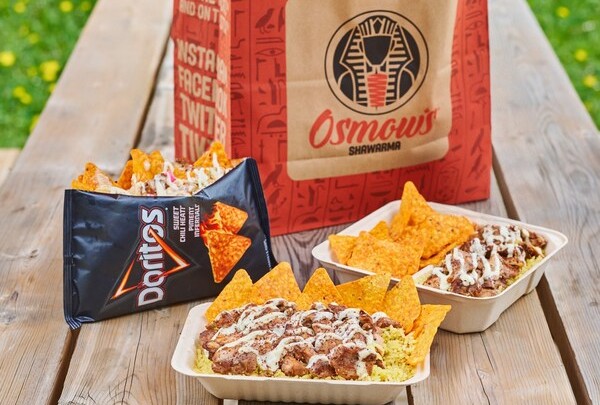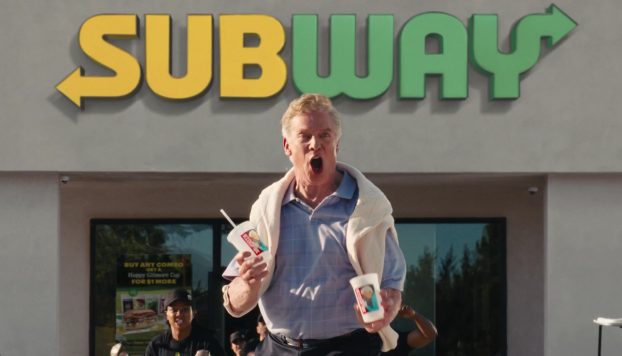Shell Canada Products is fueling increased convenience and speed for customers with a new payment initiative that’s also a boost to its database marketing efforts and its business.
The Calgary-based company believes it is the first gasoline retailer in Canada – and may be the country’s first retailer of any kind – to use this new payment technology.
EasyPAY eliminates the need to pull out cash or swipe a credit card, and, for Air Miles collectors, to also dig out their rewards card when they fill up their tanks. Instead, the transaction occurs thanks to a free, wafer-thin, plastic tag that is roughly one-third the size of a credit card and contains a microchip transponder. The tag is designed to be carried on a keychain, and can be used for fuel and car wash purchases.
Customers can register for easyPAY by mail, fax, phone, or over the service’s Web site (www.shell.ca/easypay). At sign-up, customers designate the credit card to which they would like their purchases billed – the service accepts VISA, MasterCard, American Express and Diners Club – and provide their Air Miles membership number.
To buy gas, customers simply place their easyPAY keytag before the easyPAY symbol on the pump (which includes a receiver), the customer’s unique identification number embedded in the tag is transmitted to the pump, and Shell’s computer system automatically charges purchases to customers’ selected credit card and adds reward miles to their Air Miles account.
The service first launched in Calgary last November, and rolled out to another five major Canadian markets – Vancouver, Edmonton, Toronto, Ottawa and Montreal – in late February. Newspaper inserts, TV and radio ads and some direct mail, all by J. Walter Thompson, kicked off in these markets in late February, running for seven weeks, and the new service is also supported by an Air Miles promotion.
Tim Edwards, easyPAY project manager and the advisor in Shell’s brand and forecourt department, says easyPAY is geared to ‘a very wide target range’. This group includes ‘hurried achievers,’ that is, customers on the go and looking to fill up their tanks as quickly as possible. Parents may appreciate the added security of being able to complete a fuel purchase without leaving the sight of children in the vehicle. In other security features, the tag number is encrypted, and no personal or credit card information is stored on the device. Still, other consumers may simply like the convenience of replacing up to two cards (or cash and a card) with one device.
‘The creation and the direction that we chose to go towards easyPAY was based upon our brand position of knowing that, as the industry moves forward, speed and convenience are paramount in attracting the customers and building our business,’ says Edwards, which has been Shell’s positioning over at least the past few years.
Indeed, easyPAY does shorten the transaction time ‘by 100 per cent or more’ over swiping credit and Air Miles cards, says Edwards. Once placed in front of the pump, the keytag activates the pump in roughly four seconds and confirms the transaction through to the consumer’s credit card about 16 seconds later. The company also aims to ship the keytag to customers within seven days after sign-up.
‘[Customer] relationship management is what got us to easyPAY – understanding the customer, understanding [customers] better and trying to put something in place that’s what they’re looking for,’ says Edwards.
The database-driven service also allows Shell to stay tuned to customer spending habits, adding data such as who’s using the service, how frequently and if they’re combining fuel and car wash purchases. Edwards checks the data daily to monitor tag counts, average volumes and tags used by site, and plans to undertake, on a quarterly basis, ‘a more detailed analysis to say how customer spending habits are changing through the use of easyPAY and hopefully being able to use that information to help improve the program for [customers].’
Another benefit to an easyPAY database is that not all easyPAY users are Air Miles subscribers. For its part, Air Miles offers the ability to track customers who pay by cash, who can otherwise be ‘very, very difficult to track.’
As a participant in Air Miles since 1993, the company has been tapping into the data that the rewards program provides about Shell customers’ purchasing habits not only at its outlets, but also at other participating merchants. Shell also gathers data through its own point-of-sale and transactional databases and customer surveys.
To date, easyPAY is available in 50 to 70 per cent of stations – totalling 210 easyPAY sites – in the six major markets, and about 85,000 customers have signed up over the last couple months. ‘We see increases in all aspects,’ says Edwards. For one, ‘we are seeing [easyPAY] customers use our easyPAY sites, as well as our non-easyPAY sites, more frequently.’ In-store purchases have not dropped, and because easyPAY customers tend to visit Shell stations more frequently, have essentially increased. Not only customers who were previously using their credit cards at the pumps are switching to easyPAY, but some customers who typically paid by cash or debit have come on board. And some easyPAY adopters have started to use the service as their only option for gassing up. ‘We are getting what we would consider to be a significant increase in our market share from those customers,’ says Edwards, although he would not disclose further details.
Shell began looking at a similar payment technology in 1998 and kicked off a test program that year in Calgary using a battery-powered keytag and a car-mounted device. Although it offered the advantage that its radio frequency signal could be thrown farther, the original technology elicited customer frustration with the batteries’ tendency to fail over time. Last November, the improved, wireless radio-frequency device debuted in Calgary.
Over the long term, Edwards is eyeing several other improvements to the service, from increasing the number of participating locations within the six active major markets to broadening the service to other markets throughout Canada, other methods of payment (including debit card and other credit cards) and other products, such as in-store merchandise.























